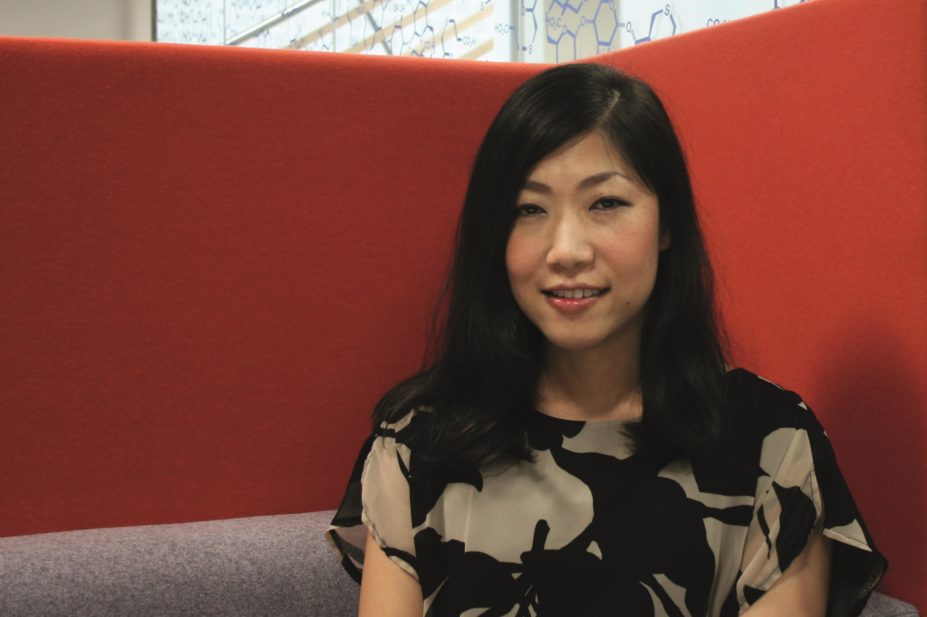
MAG / The Pharmaceutical Journal
The Japanese Pharmaceutical Association (JPA) is the national professional leadership body for approximately 100,000 pharmacists (around 35% of the registered pharmacists in Japan) across all sectors of the profession. On 30 September 2015, during a Royal Pharmaceutical Society (RPS) reception at the International Pharmaceutical Federation (FIP) World Congress in Dusseldorf, Germany, the JPA and RPS signed a partnership agreement pledging to work together to share best practice on patient care and approaches to workforce development.
A year on, the RPS has taken on Naoko Arakawa as an international programme lead. Arakawa originally worked as a clinical pharmacist in Japan before going to University College London to complete a masters in clinical pharmacy, international practice and policy and a PhD in global pharmacy education. Her role at the RPS is to facilitate collaboration between Japan and the UK, enabling the countries to learn from each other.
What has happened since the partnership agreement was signed between the RPS and JPA?
In the first year of the collaboration since the memorandum of understanding (MoU) was signed, we have spent a lot of time preparing for the collaborative projects: continuing dialogues between the RPS and JPA; seeking external funding; and planning the programme and project protocols.
So far, we have been granted three awards from three foundations — two from the UK, the Daiwa Anglo-Japanese foundation and the Great Britain Sasakawa foundation, and one from Japan, the Japan Nagai Foundation Tokyo. We’ve also applied for another grant from Japan.
Originally the collaboration started between Ian Bates, director for education development at both University College London and FIP, and Shigeo Yamamura, chair of the international affairs committee at the JPA and professor in the faculty of pharmaceutical sciences at the Josai International University in Japan. The international board for this project includes the presidents and chief executives from both organisations, the director of professional development at the RPS, Catherine Duggan, and, Yamamura.
What is your role here at the RPS?
My role is to develop a collaborative programme between the RPS and the JPA and organise joint activities to share best practice and enhance the professional development process. The overall aim is to improve the public’s health. The project will run for three years. To get funding, we have to provide evidence, outcomes, findings etc. With the funding we’ve secured in 2016 we’re organising a collaborative symposium in Japan in October, where we will share best practice and find out what each other is doing. Hopefully if we secure the funding for future years we’ll continue the symposium in alternate countries each year.
So this year we’re going to see how it goes, what the challenges are and how we solve them. If it goes well I think this will be a good first example to expand the international collaboration of the RPS.
How does pharmacy in Japan compare with pharmacy in the UK?
In Japan, pharmacists are regulated by the Ministry of Health, Labour and Welfare
while pharmacy premises are regulated by local health authorities.
The big difference in Japan is that there are no regulated pharmacy technicians, so pharmacists do all the work. We don’t have any regulations for revalidation. In Japan, a pharmacist’s qualification is lifelong — once they register they are pharmacists until they die. So that’s why in Japan it’s especially important to have seamless professional development support from day one of a pharmacist’s registration to advanced level practice, thereby supporting the provision of safe and effective pharmaceutical care.
One other area where Japanese pharmacy practice is very different from in the UK is in emergency response. We have a lot of disasters and pharmacists are part of the initial response team — a big pharmacy van goes into emergency situations and helps. Pharmacists are able to manage patients with long-term conditions before the patients deteriorate. Pharmacists can act and help them, for example with lost medicines.
In Japan, quite a lot of pharmacists focus on dispensing, but it’s time to shift to more patient-centred care. Clinical pharmacists are quite common in the hospital setting but the Japanese government wants to use pharmacists more, so now they are leading clinical pharmacy practice in community and emergency settings.
The JPA wants to develop better continuing professional development (CPD) systems for Japanese pharmacists. The RPS has accumulated a huge amount of experience in terms of developing competency frameworks, but the JPA shouldn’t imitate and implement the same thing. Their members and settings are different. But based on the RPS’s experiences, the RPS can help the JPA to develop its own CPD systems.
What challenges/changes are pharmacists in Japan currently experiencing?
All over the world, health resources are limited. I understand the difficulties pharmacists are facing with funding cuts, however, I believe pharmacists have the skills and knowledge to be able to innovate.
In April 2016, a ‘home pharmacist’ policy was implemented in Japan for community pharmacies. Individual pharmacists are able to make contracts with individual patients, and are responsible for the patient 24 hours a day. Of course the workload is going to increase, but this is a rich challenge for pharmacists to provide more face-to-face care for patients — I understand it is tough, but we are pharmacists, we are healthcare professionals, so we must innovate to improve patients’ and the public’s health.
Why do you think international cooperation is so important between pharmacy associations such as the RPS and the JPA?
To develop a pharmacy workforce able to meet local, national and global health needs, national pharmacy professional leadership bodies need a vision to facilitate country-level initiatives. Through international collaboration, professional leadership bodies can accumulate more experiences and evidence from different sources and settings to develop their vision.
What did you find through your PhD in global pharmacy education?
I undertook three different studies looking at the quality of pharmacy education practice: from the student perspective; at country/institutional levels; and also at the curriculum level. The findings of the studies provided recommendations for high quality initial pharmacy education globally. These can be applied at all levels of pre-service pharmacy education across nations by identifying gaps and challenges, and enhancing educational strategies to strengthen pharmacy education in different settings.
Through my PhD, I’ve identified many factors related to pharmacy education; how we can produce better pharmacists to serve the health needs of local people. The collaboration with the FIP also influenced my thinking for improving pharmacy workforce development through international collaboration — this kind of thinking as well as my research skills are extremely beneficial for this project.

